#seashell magick
Explore tagged Tumblr posts
Text
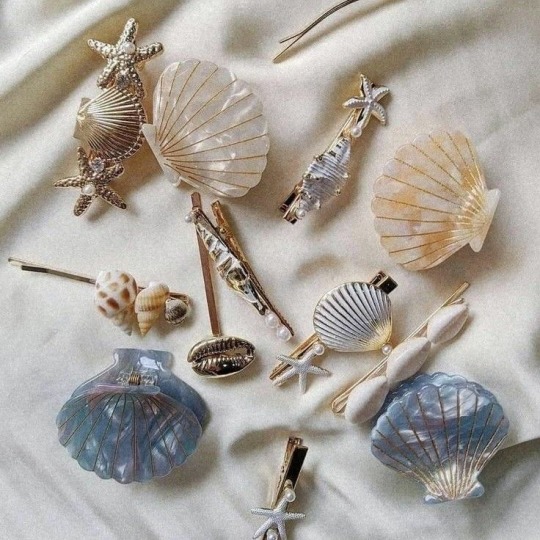
#aesthetic#feminine#coquette#goddess#soft girl#mermaid#lolitacore#sea#seafoam#blue#sea sand surf#seashell#magick#witchcraft
402 notes
·
View notes
Text
𝓎𝑜𝓊 𝒽𝒶𝓋𝑒 𝒶 𝒷𝒶𝓉𝒽 𝒸𝓊𝓅.
𝒾 𝒽𝒶𝓋𝑒 𝒶 𝒷𝒶𝓉𝒽 𝓈𝒽𝑒𝓁𝓁…

𝓌𝑒 𝒶𝓇𝑒 𝓃𝑜𝓉 𝓉𝒽𝑒 𝓈𝒶𝓂𝑒.
#/j /silly#jokes aside i highly recommend working with seashells. they have such gentle and beautiful energy#each type even has their own properties just like crystals!#sea witch#siren witch#witchblr#witchcraft#magick#water witch#i want to live in the ocean
14 notes
·
View notes
Text

Mermaid spell candle 🌊🐚 via // avalon princess
#mermaid candle#siren#ocean#atlantis#intention candle#crystals#water element#candle#candles#magical#underwater#seashells#divination#sea witch#sea magick#ocean candle
15 notes
·
View notes
Text


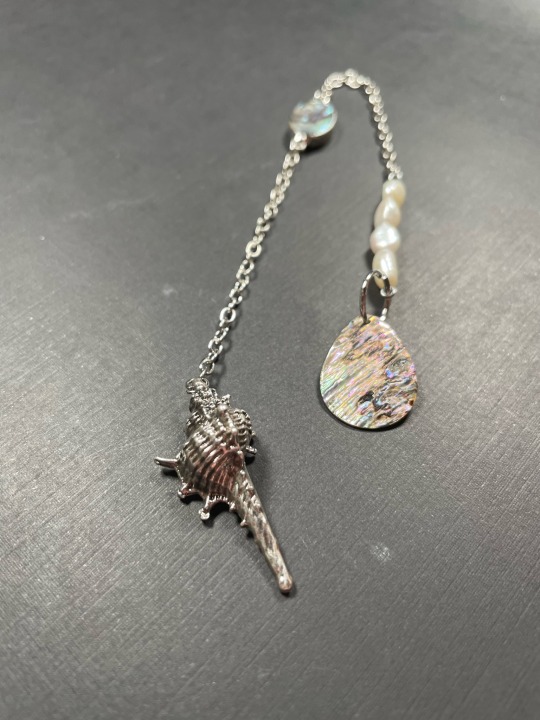
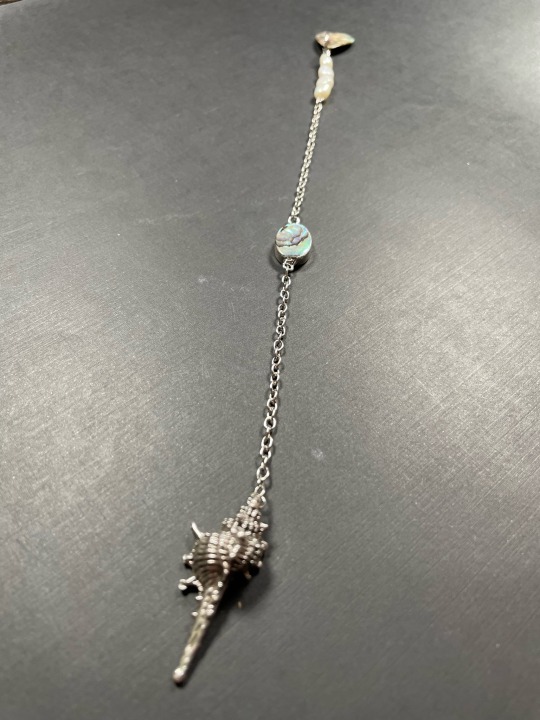
Latest designs for the Friday the 13th Sale!
#witchblr#witchcraft#witchythings#paganism#witch crafts#hand made jewelry#witchcore#hellenic polytheism#sea witch aesthetic#sea witchcraft#sea witchery#sea witch#sea core#sea shell jewelry#sea shells#deluxe pendulum#seashell pendulum#pendulum magick#pendulum divination#pendulumshipping#small business#witch craft#divination witch#divination services#divination community#divination tools#water witchcraft#water witch#water magic#abalone
21 notes
·
View notes
Text

#crystals#shell#seashell#sea shell#himalayan salt#pink himalayan salt#pink salt#aesthetic#witch#witchcraft#magick#magickal#pretty
14 notes
·
View notes
Text
𝐈𝐦𝐛𝐨𝐥𝐜 𝐌𝐚𝐠𝐢𝐜𝐤 𝐉𝐚𝐫 𝐈𝐝𝐞𝐚 ❄🕯🌿


Blessings everyone!!🌸 I want to wish you all a blessed Imbolc full of love, light and peace☁️ As some of you already know, I love making these magic jars for every sabbat, dedicated to welcoming the energy of the season and honoring nature. I use them as a mini altar and they are great if you don't time or energy <3 For this year’s Imbolc magick jar (my first since 2021) wanted to focus more on the color purple, as it represents the whimsical energy and the revival of spring, while still honoring the winter we are in. My very first magic jar had a similar vibe, so I wanted this one to reflect that while also adding a bit of authenticity and making it resonate with the energy I feel now. I’ll be lighting it on February 1st and 2nd, and I might change the candle color at some point. ♡🍇☀️🐑



Here’s the list of elements I used for it 🌿 hope you like it! ♡
• Coins – Wealth, abundance
• Crystals – amethyst, pink quartz and ruby
• Fire elements for Goddess Brigid: a piece of wood and Carnelian (symbolizing her flame)
• Rosemary – Love, good memory
• Snail shells – Patience, good luck
• Lots of salt – Purification and protection
• Himalayan salt – Love and purification
• Dried rose petals and crocus flowers (I meant to add dried snowdrops from last year, but I forgot where I put them oops!)
• Seashell – Emotions, love, protection
• Purple candle (I wasn’t sure whether to choose this or a pink one, but I decided to keep a whimsical purple energy. You can use any candle that feels right for Imbolc.)
• Bay leaf with a sigil of Goddess Brigid ♡
🌸🐑🌸🐑🌸🐑🌸🐑🌸🐑🌸🐑🌸🐑🌸🐑🌸🐑
And here are the items that I used <3 I forgot to add some dried lavender too, but maybe tomorrow ☀️ Of course, you can use any element or item that works best for you. Wishing everyone a happy Imbolc! I hope it brings us all joy and everything we wish for. Stay safe 🍇
#paganism#hellenic polytheism#deity work#hellenic pagan#deity worship#witch#witchblr#witchcraft#goddess brigid#brigid#celtic paganism#celtic mythology#imbolc#candlemas#sabbat#eclectic pagan#pagans#pagan#pagan witch#paganblr#witchy#witches#witch community#witchcore
81 notes
·
View notes
Text
Witches & Witchcraft: Types & Definitions
There is an abundance of types of witches, some being more common than others, for example, death witch or hedge witch. I have provided the different types of witches with a brief description/definition of what they study, believe and tools most commonly used for each.
The types of witchcraft is entirely up to the individual which they prefer to do. One person may only follow on type of magick whereas another may follow several. Listed are a handful of the many kinds, but I'm listing the most common/known types of magick/witchcraft that people fall into.
I have grouped some witches together as they fit together under the same or similar definitions.

Types of Witches
Religious witches;
Christian, Satanic (Theistic), Laveyan Satanic, Hellenic, Celtic and Wiccan, etc. are witches that follow a primary belief system and incorporate their religion into the craft.
Non-Religious witches;
Secular - doesn't work with [a] deity(ies).
Science - (also a craft type), uses metaphysical and scientific fads and theories mixed together.
Other types of witches;
Solitary - works alone and is not part of a coven. Won't typically work with other witches for spell work or any part of their practice.
Eclectic - a practice that includes multiple practises from different areas. A mixture of all practices, may practise one more than another, or all equally.
Hereditary/Generational - a witch who is born into a family whom practice the craft. The term 'Blood witch' is often a hot topic of controversy as to whether it makes one a more powerful witch.
Traditional - a type that is based on honouring the traditional ways of magick, which also ties in nicely with generational/hereditary witches.
Chaotic/Chaos - a witch who utilizes new, non-traditional and unorthodox methods. It's still relatively new and highly individualistic practice while still drawing from common forms of magick.

Types of Witchcraft/Magick
Green Witch; A witch who uses natural magick, such as creating blends of different plants, or primarily using herbs and/or crystals spells in their craft. Tools mostly consist of herbs, crystals, stones, flowers, soil or other greenery.
Hedge Witch; Also know as an astral witch, this type of magick is orientated around spiritual work such as astral projection, lucid dreaming, spirit work, healing and out-of-body magick. Tools mostly consist tarot cards, runes, pendulum, stones, crystal ball, mirrors & candles.
Dream Witch; Mindful and internal magickal practice mainly based from interpreting dreams and/or engaging in lucid dreaming. Practises used to 'de-code' symbols and messages in the dream world can be used similarly to how one would use divination techniques. Tools mostly consist of dream catchers, candles, books of glossaries of symbols.
Sea/Ocean; Derived from materials and abstract ideas involving ocean and the oceanic world. Sea or ocean magick can be worked with by using things found on or relating to a beach/lagoon. A sea witch might draw their energy from such tools. Tools commonly consist of driftwood, pebbles/stones, seashells, ocean water, bones, seaweed, candles.
Storm/Weather; magick used through combining one's energy with the weather; most commonly rain. Weather witches will collect different ingredients provided by the weather, absorb energy from storms, manipulate winnds, or perhaps predict the weather. Tools most commonly consist of rain/snow water, symbols/weather maps, crystals.
Cottage/Hearth; Magick that is weaved and worked or embedded into mundane tasks around the house or for loved ones. Cottage magick is usually worked into cleaning, hobbies or cooking. Tools commonly consist of essential oils, incense, bells, flowers, cleaning utensils, spices and herbs.
Tea Witch; Creating blends of teas for protection, remedies or even to use for tea-leaf divination. Tools commonly consist of tea, herbs, waters, spices.
Tech Witch; Use of technology in the craft, mostly based through phones or computers. Mostly used for storing of information, grimoires, spell books and Book of Shadows/diaries. Tools consist of apps on the phone, digital sigils, online blogs and pages.
Garden/Flora; Mostly (if not all) focused on herbal and botanical measures. Many garden witches have their own garden and plant flowers and herbs to draw in energy for their home and to include in rituals and spells. Tools commonly consist of flowers, soil, seeds, greenery, twigs/tree branches, leaves.
Elemental; Using all 4 (or 5) elements in an honouring or acknowledging form. A witch can choose to work with all, or singular elements. One may have a dedicated area on their alters to a particular elements. Tools consist of anything related to said element.
Faery/Fae; Magick for those who communicate with, and/or work with the Fae. Those whom work with fae may also leave offerings regularly as thanks for the assistance of a faery in their spell work. Tools commonly consist of anything sweet, sigils, offerings.
Spirit; A practice which an individual will perform spell work in conjunction with (or the help of) any manner of spirit, including Ouija, demon spirits, spiritual contact of any kind, working with ancestors. Tools commonly consist of crystals, bells, incense, Ouija boards, tarot cards, pendulums, sigils.
Draconian: The use of dragons and dragon imagery; whether it be trough astral matters or in spells and rituals. May also be connected with dragon spirits on their journey. Tools commonly consist of dragons art, statues, candles.
Seasonal; Utilizing and drawing energy from specific time periods of the year for their magick. One individual may feel more powerful at a particular time of year. It can also be spread out into the 4 seasons. Tools commonly consist of herbs related to certain seasons, stones, ruins and the weather.
Music; Can be through singing, humming, playing an instrument, creating music or having it on during spell work to add energies. Tools consist of speakers, instruments, voice, chimes, lyrics & sheet music.
Art & Craft; Anything from painting to knitting to building something. Tools consist of anything you can craft with.
Sigils; Working majorly with sigils and the intent that can be put into them to activate their power. Tools commonly used are pens, paper, makeup, candles.
Astronomy/Space/Luna; Correlates their belief in conjunction with the planets, stars and/or moon. Versed in moon phases and tend to do spell work at night rather than day time. Tools commonly used are horoscopes, calendars, charts, moonlight, moon water.
Energy; Those who prefer to do magick through energy exercises and manipulation rather than many physical tools or materials. This may also include aura work. The only tools needed for this type is yourself.
Crystal; Magick that is worked commonly with stones and crystals. The practise may include chakra balancing, crystal meditation and even spell work or rituals. Extensive knowledge of stone, including how to identify them. Tools most commonly used are crystals, books, grimoires and stones.
Literacy; Those who practise through books and literature - studying the craft after the 'beginner' phase of learning. Tools are books, poems, written work.
#witch#witchcraft#witchblr#pagan#wicca#witches#pagan witch#paganism#pagan wicca#witches of tumblr#baby witch#beginner witch#new witch#pagans of tumblr#witchcore#witch community#witch tips#witchy vibes#witch aesthetic#witchy woman#paganblr#hellenic pagan#celtic paganism#polytheism#grimoire#book of shadows#magick#folk magic#spell
283 notes
·
View notes
Text
✧ ℌ𝔞𝔩𝔩𝔬𝔴𝔢𝔢𝔫 𝔖𝔭𝔢𝔠𝔦𝔞𝔩: 𝔚𝔥𝔞𝔱 𝔨𝔦𝔫𝔡 𝔬𝔣 𝔴𝔦𝔱𝔠𝔥 𝔞𝔯𝔢 𝔶𝔬𝔲? ✧


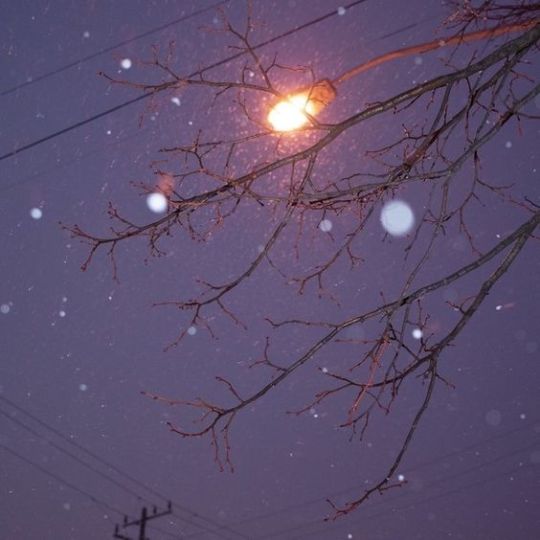
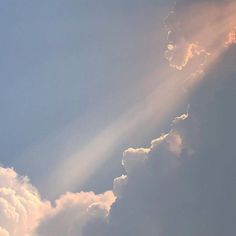

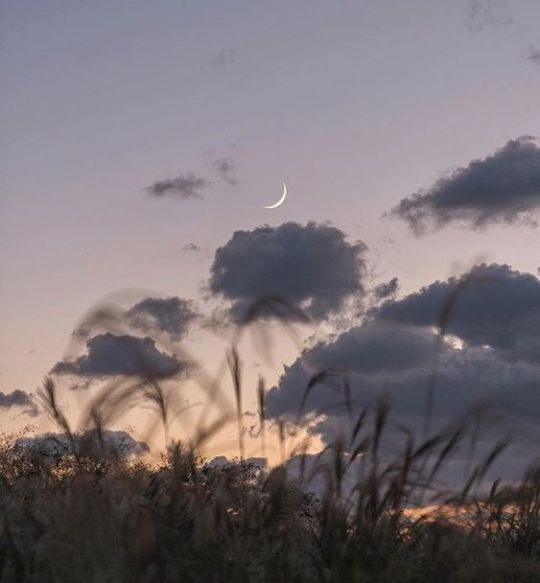
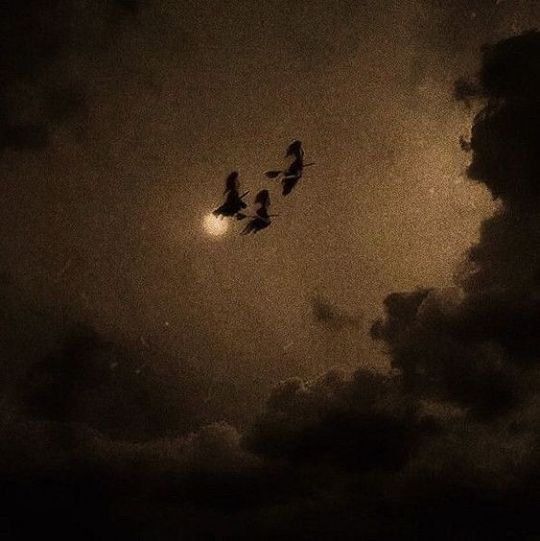

01. Green witch
The Green Witch embraces nature by drawing on the energies from the earth and of untamed things. They commune with the land, with stones and gems and they reley on plants, flowers and herbs. They call to nature for guidance and respects every living being and they have a strong belief that humans must give back to world and protect it. They tend to be animal/environmental activists and they will go the extra mile to spread awareness.
The Green Witch makes their own ritual tools from found objects in nature and they make sure these are ethically sourced materials. They might also work with Animal Guides and Plant Spirits. The forest is the Green Witch's sacred temple and they often spend time hiking or visiting parks and gardens.
Books I recommend:
The Green Witch ~ Arin Murphy-Hiscock
Encyclopaedia of Magical Herbs ~ Scott Cunningham
Occult Botany ~ Paul Sedir
The Treadwell's Book of Plant Magic ~ Christina Oakley Harrington
Wortcunning ~ Nigel G. Pearson

02. Crystal Witch
Crystal Witches focus their magick on healing and manifesting. Crystals are known for their healing energies due to their ability to raise one's own vibration. Crystals emit this constant vibration, that when met with a lower vibration, has the ability to raise, in turn, providing healing qualities through an energetic level, which can therefore fast track our own physical healing.
Crystal Witches may also be drawn to rocks and stones alike and generally appreciate the gift of nature. They may also be attracted to the study of geology and often work with chakras/practice chakra meditation.
Books I recommend:
The Power of Crystal Healing ~ Emma Lucy Knowles
The Zenned Out Guide to Understanding Crystals ~ Cassie Uhl
The Crystal Workshop ~ Azalea Lee
Crystals for Witches ~ Eliza Mabelle

03. Kitchen Witch
The Kitchen Witch’s potion is a soup and they’re magical wand is a trusty wooden spoon. Cooking becomes a sacred art for the Kitchen Witch. A Kitchen Witch may not often dedicate a specific time and resources to ceremony, instead they work intuitively rather than ritually to find the magic in everyday life.
Kitchen Witches personalise their space with great intention and care. They instantly know when a space resonates with them or not. They often cook with whole, organic foods and they may also grow their own food. They also tend to enchant ingrediants before using them in a dish and they might sometimes make dishes to treat illnesses.
Books I recommend:
Potions, Elixirs & Brews ~ Anais Alexandre
The Wicca Cookbook ~ Jamie Wood & Tara Seefeldt
Wicca in the Kitchen ~ Scott Cunningham
The Magick of Food ~ Gwion Raven

`04. Sea Witch
A sea witch is a practitioner of witchcraft whose spiritual focus and magical practices are closely tied to the sea and its elements. They use the potent energy of the ocean as a force to drive spellcraft, cleanse the soul and renew the spirit. Sea Witches forge a deep bond with the sea and its inhabitants, working with its energy to manifest their intentions and achieve their goals.
Sea Witches are naturally sensitive and empathetic. The ocean is their sacred space and often times they might live near the ocean or are very drawn to it. They are also very drawn to stroms and enjoy the rain. They might study oceanic mythology and sea animals. They also often collect seashells, pebbles or other beach treasures and may use them in their craft.
Books I recommend:
Sea Witch's Companion ~ Levannah Morgan
Sea Magic ~ Sandra Kynes
Water Witchcraft ~ Annwyn Avalon
Mermaids ~ Skye Alexander

05. Divination Witch
The Divination Witch focuses primarily on divination practices such as tarot & oracle, pendulum, scrying, runes, tea leaf reading, meditation, and connecting to your inner guides/higher being. To them, it’s most important to incorporate these divination practices to their everyday life, or at least in ceremonial rituals.
A Divination Witch may draw power from the earthly elements, mediation, or with the help of seasonal changes that open portals and lower the veil between the physical and spiritual worlds. For those highly in-tuned with their intuition, have the ability to hear, see, or sense what others can’t, find themselves as an empath, and have the uncanny ability to predict the future.
Books I recommend:
The Book of Divination ~ Michael Johnstone
I Ching or Book of Changes ~ C.G. Jung & Richard Wilhelm
Tarot Card Meanings ~ Brigit Esselmont
Chakra Healing ~ Margarita Alcantara

06. Lunar/Cosmic Witch
A Lunar Witch has a fascination and connection with the skies, stars, moon and planets are unparalleled. With the fundamental belief that what happens above in the cosmos is a direct correlation to what happens on Earth, Cosmic Witches focus their study on astrological transits, moon phases, and intertwining that with their own natal birth charts. A strong belief is that as we are born, we are given a blueprint, a snapshot of the skies, that presents past, present and future forecasts of not only ourselves as an individual, but as a collective, sometimes generational viewpoint too.
They draw their power from the Moon and perform certain spells and rituals depending on the phase of the moon.
Books I recommend:
Moon Magic ~ Aurora Kane
Moon Spells ~ Diane Ahlquist
Moon Magic ~ Diane Ahlquist
Witchs Moon ~ Edain McCoy

✧ 𝔗𝔥𝔞𝔫𝔨𝔰 𝔣𝔬𝔯 100 𝔣𝔬𝔩𝔩𝔬𝔴𝔢𝔯𝔰! ℌ𝔞𝔭𝔭𝔶 ℌ𝔞𝔩𝔩𝔬𝔴𝔢𝔢𝔫! ✧
Special thanks to @rainychibikko @googiekook @attymi @miraclekay97 @julyourwitch @honeytarotmind @honnuey @notakitsune @mercurialstime @artscapismsworld
#tarotblr#witchblr#witch community#pac reading#tarot community#divination community#pick a pile#pick a picture#pick a card#tarot witch#witch#witches#witchcraft#100 followers#halloween special#casper spills
283 notes
·
View notes
Text
Jörmungandr Guide
I've been posting a bit about the World Serpent and figured I should make a whole guide on him. Jörmungandr was the second deity that I began working with. And as he is a being with little information, despite having a major role in Norse myth, I find it difficult to easily devote myself to him so here's some advice for others! (Note: Most of the offerings and associations are UPG. This is what I have learned from my experience with Jörmungandr.)

Name: Jörmungandr (Yor-Mun-Gan-Dur). "jǫrmun" means "vast" or "immense". "gandr" is a little uncertain in definition but generally understood to mean "magic", "wand", or "beast".
Other Names: "Miðgarðsormr" meaning "World Serpent" or "Midgard Serpent". In Skaldic poetry, he can be seen as being referred to with some variation of "Reistr Jarðar" meaning "earth-twist" or "earth-curl".
Family:
Father: Loki, The Trickster God
Mother: Angrboða, Mother of Monsters
Brother: Fenrir, He Who Dwells in the Marshes
Sister: Hel, Goddess of Death
Main Myths: Thor lifting Jörmungandr disguised as a cat, Thor's fishing trip, Ragnarök
Common Misconception: Jörmungandr is neither evil nor the cause of Ragnarök. Jörmungandr is a neutral being who is the personification of rebirth and change. He is a warning of Ragnarök beginning, not the reason. Ragnarök is a fated event, always meant to happen. It's important to note that Ragnarök is not the END but the end of the world that WE know. In the myths, there are deities, like both Odin and Thor's children, who survive and begin anew in the new world which will be repopulated. Rebirth is core to Jörmungandr and it should be noted in his myths, besides Ragnarök, it is Thor who finds Jörmungandr. Jörmungandr is described to be an ouroboros who remains wrapped around Midgard, minding his own.
Past this will be UPG(Unverified Personal Gnosis) unless marked with an *, in which case, these symbols are mentioned in his myths.
Personality: Personally, in my presence, Jörmungandr is a very intimidating being. Not because he is purposely trying to scare those who interact with him, but because he is very firm and can be distant in his words. Very forward in his wants for you, he provides advice and doesn't demand anything in turn. Jörmungandr is not one who holds your hand to guide you. He is very much a being who wants to see you take charge in life. He cares less for physical offerings and more devotional acts that are beneficial to yourself. He wants your pursuit of change, your ambitions to thrive, your pursuit of life in general. While other deities may provide a familial bond with those who work with them, Jörmungandr is very much a stoic mentor who is waiting for you to show your efforts.
What you may learn with Jörmungandr: How to set and enforce boundaries, how to be comfortable with change, how to accept change and move on, self-confidence, self-care, how to take charge of your life, learn shadow work, learn ocean magick, learn runes, healing past traumas
Colors:
Black
Silver
Blue
White
Green
Animals:
Snakes*
Oxen*
Cats*
Fish
Wolves*
Elements:
Water*
Earth*
Fire
Crystals:
Clear Quartz
Black Obsidian
Black Tourmaline
Amazonite
Aquamarine
Moonstone
Tarot:
Wheel of Fortune
Death
The World
Six of Swords
Physical Offerings:
Seashells
Sand or rocks from the Beach
Sea Water
Storm Water
Snake-Related Imagery
World/Earth-Related* Imagery
Eggs
Snake Skin
Runes (Jera, Algiz, Laguz)
Lotus Scents
Water Lily Imagery
Ouroboros* Imagery
Devotional Acts:
Meditate to Ocean sounds
Light Incense
Pursue your goals
Shadow Work
Clean your local beach
Donate to ocean preservation charities
Donate to climate change prevention charities
Build emotional and mental strength
Honor his family (Loki, Hel, Fenrir, Angrboda)
Practicing protection and cleansing magick
Wear snake jewelry
Adopt and care for a snake/reptile
Share your meals with him
#norse paganism#deity work#deity worship#paganism#heathenry#pagan#pagan witch#norse heathen#jormungandr#jormungandr worship#norse jormungandr#polytheism#deity offerings
82 notes
·
View notes
Text
APHRODITE



WHO IS SHE?
Aphrodite is the Greek goddess of love, beauty, war, desire, and fertility. She is often depicted as a powerful and seductive figure who wields great influence over both mortals and gods. She is believed to have power over all aspects of love and desire, including physical beauty, sexual attraction, and romantic love.
BASIC INFO:
Appearance: Aphrodite is often depicted as a beautiful and seductive woman, with flowing golden hair and captivating grey or blue eyes. She is often shown wearing a chiton, a long, flowing garment in a light, sheer material, with a belt around the waist. Often, she is accompanied by the winged god Eros, or Cupid, who represents the god of desire, love and erotic desire.
Personality: she is often portrayed as a complex and multi-faceted deity. On one hand, she is a loving and nurturing mother figure, associated with love, fertility, and the natural world. On the other hand, she is often depicted as a powerful and seductive deity, associated with beauty, desire, and pleasure. She is often portrayed as having a powerful and somewhat overwhelming presence.
Symbols: rose, pearl, mirror, girdle, anemone, lettuce, narcissus seashells, scallop shells, Venus, golden apples, the number 5, and mirrors
Goddess of: love, beauty, war, desire, and fertility
Culture: Greek
Plants and trees: apple, linden tree, myrtle, pomegranate, poppies, lettuce, rose, quince, ash, poplar, anemone, artichokes, aloe vera, lemon verbena, dill, thyme, calla lilies, tulips, geraniums, alstroemeria, and hydrangea
Crystals: rose quartz, scallop pearl, diamond, aquamarine, Zambian emerald, agatized coral, ruby fuchsite, rose gold, pigeon’s blood, saltwater pearl, padparadscha sapphire, cultured pearl, triphane, white opal, freshwater pearl, olivine, aurichalcite, cat’s eye, Mozambique garnet, aqualite, Colombian emerald, Burmese ruby, trapiche emerald, mangano calcite, opal royale, akoya pearl, biron emerald, blue kunzite, lepidocrocite, welo opal, gibbsite, African emerald, kimberlite, grandidierite, strawberry quartz, linarite, mayanite, pumpellyite, lemurian jade, thulite, forsterite, green calcite, tremolite, spodumene, marble, rutilated quartz, emerald, pearl, cinnabar, dolomite, clinochlore, chrysocolla, azurite, peridot, kyanite, dumortierite, pink opal, apophyllite, and chrysoprase. (A lot of beautiful crystals for a beautiful Goddess).
Animals: butterflies, swans, dolphins, geese, doves, sparrows, bees, goats, hares, cats, hummingbirds, unicorns, and horses
Incense: rose, myrrh, vanilla, cinnamon, jasmine, ginger, cherry blossom, and lavender
Practices: love magick, setting boundaries, healing (especially from relationship), self-love, empowerment, insight, embodying the divine feminine, and beauty magick
Colours: red, pink, baby blue, sea foam, aqua, violet, silver, and light blue
Number: 5
Zodiac: Libra
Tarot: The Empress, The Lovers, The Star, and The Suit of Cups
Planet: Venus
Days: Friday, Ostara, Lupercalia, and Aphrodisia (the third week in July to the third week of August).
Parents: Zeus, Dione, and/or Uranus
Siblings: Hephaestus, Ares, Athena, Artemis, Apollo, Hermes, Dionysus and Persephone (she only had half siblings)
Partner: Hephaestus, Anchises, Adonis, Ares, Eurydome, Hermes, Poseidon, Dionysus, and many other lovers
Children: Eros, Himeros, Pothos, Phobos, Deimos, Harmonia, Anteros, Rhodos, Eryx, Peitho, Rhodos, The Graces (Charities), Beroe, Golgos, Priapus, and Hermaphroditus
MISC:
Doves: Aphrodite is associated with doves because of her role as the Greek goddess of love, beauty, pleasure, and fertility. Doves were considered to be symbols of love, purity, and peace in Greek mythology, and were often used by Aphrodite to express her message of love and desire. In some myths, Aphrodite is said to have a chariot drawn by doves, which are her sacred birds. Additionally, doves were often used in the rituals and celebrations dedicated to Aphrodite, and were sacrificed to her in order to gain her favour.
Love and beauty: she is associated with love and beauty because she is the Greek goddess of love, beauty, pleasure, and fertility. In Greek mythology, she is said to have been born from the foam of the sea, and is often depicted as the most beautiful of all the gods. She is also said to possess the ability to cause both men and gods to fall in love with her. Aphrodite is known for her power over romantic love and her ability to inspire desire and attraction in others. She is also considered to be the embodiment of physical beauty and grace.
War: in Greek mythology, Aphrodite is not directly associated with war like her Roman counterpart, Venus. However, she is associated with war in the sense that she can bring chaos and strife to the battlefield. Aphrodite is known for her ability to cause discord and strife among mortals, particularly when it comes to love and relationships. She is also considered to be the goddess of sexual love and desire, which can sometimes lead to conflict and war. In some myths, she is also said to have incited the Trojan War by causing Paris to choose her as the most beautiful goddess, which ultimately led to the war.
The sea: Aphrodite is associated with the sea because, in Greek mythology, she was said to have been born from the foam of the sea. According to the myth, she was formed from the foam that was created when the severed genitals of the sky god Uranus were cast into the sea by his son Cronus. Additionally, the ocean is often associated with femininity, and Aphrodite is the Greek goddess of love, beauty, and femininity. As such, the sea represents a source of life, fertility, and sexuality, which are all themes closely associated with Aphrodite.
Rose quartz: this crystal is associated with Aphrodite due to its associations with love and emotional wellbeing. In ancient cultures, rose quartz was believed to hold the energy of the goddess Aphrodite and was used as a tool for attracting love, harmony and inner peace. The pink colour of the stone was also said to represent the love and femininity of Aphrodite. Additionally, it was believed that the stone had the power to open the heart and encourage feelings of love, compassion and emotional healing, which are all qualities associated with Aphrodite and her powers over love and emotion.
Friday: in some traditions, Friday is considered to be sacred to Aphrodite because it is believed to be the day of the week ruled by the planet Venus. In Greco-Roman mythology, Venus is the Roman equivalent of the Greek Aphrodite and is known as the goddess of love and beauty. Additionally, Friday is also associated with the planet Venus because the Romans named the planet after the goddess of love, who was the Roman counterpart of Aphrodite.
FACTS ABOUT APHRODITE:
• She is widely worshipped as a goddess of the sea and of seafaring.
• Aphrodite was born off the coast of Cythera from the genitals of Uranus.
• She is known as the Lady of Cythera, the Lady of Cyprus because of her birth story.
• Like every Greek Olympic god, Aphrodite was also immortal and powerful.
• She is often depicted as the Greek equivalent of the Roman goddess, Venus.
• Aphrodite is one of the goddesses that reside in Mount Olympus.
• She did not take rejection well.
• Supported the Trojans during the Trojan War.
• Aphrodite’s magical girdle or belt also served as her weapon.
• The statue of Venus de Milo is said to depict the goddess Aphrodite.
• Her name originated from the word sea-foam.
• Like her siblings, Aphrodite also indulged in incestuous relationships.
• Aphrodite is depicted as perfectly symmetrical.
• The temple of Aphrodite is famous for its alleged temple of prostitution.
• Aphrodite is often depicted as nude and desirable.
• There is a flower named after the Greek goddess Aphrodite (Calycanthus Aphrodite).
• There are more artworks for Aphrodite than any other classic mythology figure.
• Many Olympian goddesses have been jealous of Aphrodite.
• Aphrodite was considered greatly generous to those who worshipped her.
• She has no known children with her husband.
• Pomegranates were also once associated with Aphrodite.
• In some texts, Aphrodite is depicted as a blonde or redhead.
• She really likes lacy and frilly things, fairies, pastel colours, music boxes, classical music and old songs from the 50s and 60s, and ballet.
Aphrodite is said to have been born from the foam of the sea and was considered to be the most beautiful of all the gods and goddesses.
She was known for her love of luxury and fine things, and was often depicted surrounded by a lavish entourage of nymphs and gods.
She was associated with the arts of music, poetry, and beauty, and was believed to be the patron goddess of artists and artisans.
Aphrodite is often called "The foam-born" because she is believed to have emerged from the foam of the sea after Cronus castrated Uranus.
In Greek mythology, Aphrodite was married to Hephaestus, the god of fire and smithing, but she often had affairs with other Gods, such as Ares, the god of war.
She is often depicted with the winged God Eros, or Cupid, as her companion or son.
She had many lovers, including the mortal prince, Adonis, who died because of their relationship.
She represented the sensual aspects of love, including passion, desire, sexuality, and eroticism.
She had many temples dedicated to her throughout the ancient world, including at Aphrodisia in Athens and Pompeii.
She was sometimes depicted as a warrior goddess, associated with the battlefield and conflict.
HOW TO INVOKE APHRODITE:
To work with Aphrodite, you can engage in activities that reflect her attributes and values. Here are some suggestions:
Create a beautiful altar or shrine to honour her, adorned with symbols of love, beauty and sensuality, such as flowers, mirrors, perfume, and jewelry, etc.
Offer prayers, offerings, or libations to her in her honour. This can include burning incense, offering wine, flowers, or other gifts that are meaningful to you.
Engaging in acts of self-care and self-love, such as taking care of your physical appearance and nurturing your relationships with others.
PRAYER FOR APHRODITE:
Dear Aphrodite, great and lovely goddess of love and beauty, I come before you today to honour and worship you. Thank you for the many gifts and blessings you have bestowed upon me. Please grant me the power to love and be loved, to find joy and beauty in all aspects of my life.
May your grace and presence always be a source of comfort and inspiration for me. Hail Aphrodite, hail the goddess of love.
SIGNS THAT APHRODITE IS CALLING YOU:
• Notice an increased sense of beauty and love in your life.
• Are drawn to her symbols, such as roses, shells, or swans.
• Feeling a strong connection to her myths and stories.
• You notice a surge in your own power of attraction or beauty.
• Noticing feelings of passion and desire when you think about her.
• You have dreams or visions related to her.
• Increased occurrences of the colour pink in your life.
• An attraction to love, beauty, and romance in all their forms.
• Feelings of intense love or desire, or a heightened sense of sensual energy.
• Encounters with doves, swans, or dolphins.
• A strong feeling of being drawn to or inspired by the goddess Aphrodite.
OFFERINGS:
• Roses.
• Sweets, candy, and desserts (she loves chocolate).
• Jewelry.
• Natural honey.
• Beauty products.
• Seashells.
• Cinnamon.
• Intimate acts.
• Art and music.
• Mirrors.
• Rose quartz.
• Scallop shells, conch shells, sea shells - just shells.
• Poetry.
• Myrtle.
• Anemone.
• Poppies.
• Abandoned beehives.
• Dead bees (make sure they died of natural causes, please don’t kill bees).
• Something you created (could be drawings, poems, knitted decoration, whatever you did while thinking of her).
• Fire.
• Bread.
• Something someone else created (always ask for permission to use someone else’s art and don’t ever make it pass as your own, She’s not stupid, and will be pissed if you do).
• Olive oil.
• Statues of her or anything She’s related to, as stated above.
• White feathers/dove feathers.
• Pearls of any colour.
• Lingerie.
• Sex toys.
• Fish scales.
• Sea water.
• Wine or champagne.
• Nuts.
• Aphrodisiac scents/foods.
• Silk.
• Beach sand.
• Starfish (grab a dead one from the beach, don’t buy one because they usually take living starfish and kill them to sell it as decor or souvenirs).
• Coffee beans or ground coffee.
• Fruits like strawberries, apples, pomegranates, cherries, or grapes.
• Shellfish.
• Vanilla or cinnamon sticks.
• Cat whiskers (please don’t cut a kitty’s precious whiskers, wait for them to shed naturally - look for them mostly during Summer and on the places your cats spend most of their time).
• Lettuce.
• Himalayan salt.
DEVOTIONAL ACTS:
• Experimenting with makeup.
• Wear cozy/comfy clothes.
• Listen to music that makes you feel empowered.
• Sing along to your favourite songs.
• Give little gifts to your friends.
• Go for an evening walk.
• Sleep in when you can.
• Clean your room and let some fresh air in.
• Drink tea with honey.
• Visit the ocean or find some ways to be connected to it (sea salt, seashells, etc.)
• Write a letter to your future self or one to her.
• Go to a store and try on some new clothing styles.
• Leave positive notes in random places.
• Change your look every once in a while.
• Treat a friend to some drinks/dinner.
• Don’t limit yourself and your style because of stereotypes.
• Support small businesses.
• Take a day off and do whatever you want.
• Watch some cute animal videos.
• Visit a garden.
• Go on a picnic.
• Stand up for those who need it.
• Buy yourself some flowers.
• Be there for your friends.
• Eat those extra sweets.
• Wear more makeup/jewelry if it makes you feel nice.
• Compliment people more.
• Try out some new face masks.
• Take more selfies and pictures (by yourself and with friends).
• Enjoying floral scented things.
• Going see a movie by yourself.
• Practicing loving yourself.
• Sexually please yourself/explore and know your body.
• Make love/have sex.
• Create a playlist with songs that remind you of her.
• Baking her something sweet.
• Become a beekeeper / help local beekeepers.
#fyp#fypシ#fypシ゚viral#fypage#fyppage#tumblr fyp#satanism#satanist#deity#deity work#aphrodite#goddess#love#greek mythology#information#masterlist#themortuarywitch
39 notes
·
View notes
Text
Poseidon's Deep dive
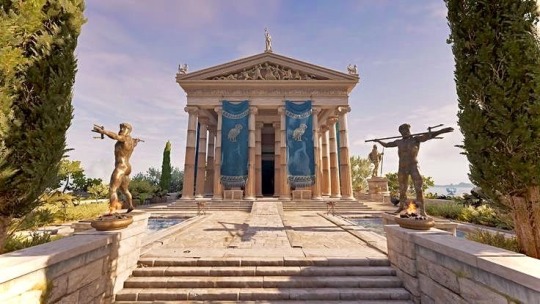
Poseidon is a great god, I learned many things while researching him, things I would've never guessed! He only came by once because of the obvious mentions and mentions of his ephipets and he was very respectful! He is amazing, so please don't judge him so fast off of myths, myths are just old ‘fan fiction’, here you go Poseidon devotees
Herbs • Celeary, wild celery, pine trees, mint, moss,
Animals• Bulls, horses, pegasus, dolphins, tuna, boars, rams, hippocampus, lambs, minotaur, seagulls,
Zodiac • Virgo and Libra (zodiacs of August)
Colors • sea colors, black, deep blue, any type of blues, gold.
Crystal• aquamarine, abalone, ocean jasper, coral, pearls, sea pearls, black pearls, pink pearls, larimar, ammorine, any crystals associated with the sea, or looks like the ocean or what reminds you of him.
Symbols• tridents, boulders, headbands, wreaths of celery leaves, billowing cloak
Diety of• Mediterranean sea, the sea, earthquakes, storms, water, horses, Atlantis (the city under the sea he drowned because they angered him), floods, tsunamis, pegasus, and protection of palaces (At Pylos and some other cities, he was a god of the underworld and his cult related to the protection of the palace.), springs, the foundation of buildings, vegetation, inland water, healing (at the city tinos he was worshiped as a healing god), sailor, drowning and shipwrecks, epilepsy
Patron of• sea, earthquakes, storms, water, horses, Atlantis (the city under the sea he drowned because they angered him), floods, tsunamis, pegasus, and protection of palaces (At Pylos and some other cities, he was a god of the underworld and his cult related to the protection of the palace.), springs, the foundation of buildings, vegetation, inland water, healing (at the city tinos he was worshiped as a healing god), sailor, drowning and shipwrecks, epilepsy
Offerings• Bull meat, imagery of bulls, bull horns, perhaps horse feed (he is the god of horses), a rock (in some myths he made a horse out of a rock), fish, meat, wine, tuna, fishnets, boar meat, ram meat, seaweed, celery, a plant, celery, food shaped of horses (ex- animal crackers, cookies, cakes), coffee, duck-shaped things and imagery of ducks (not dicks), juice, barley, mint chocolate, salt, ocean water, Honey, sea glass, fish stew, clam chowder, conch shells, cloaks, seashells, starfish, toys/art of dolphins and fish, shark teeth, sand, ship in a bottle, gold and silver objects, sticks and rocks from water and the beach, seagull feathers
Devotional• Work on a farm to take care of horses (ex-cleaning their stalls, brushing them, and changing their feed) in his honor, go fishing, take care of pet fish, tame horses, go riding horses in his honor, go walk along the sea, go horseback riding across the beach, pick up trash on the beach, donate to ocean conversation in his honor, coral reef conservation his name, donate top local disastor programs in his name, clean up, lakes, rivers, riverbanks, sing in the shower in his honor, watch ocean videos and listen to wave sounds, visit aquariums, ask him to help bath and weather spells learn marine biology, work with mermaids and siren and the fae in his honor, learn about local coral life, learn pollution in water, do map- making for ur area or fantasy lands, take life gaurd lessons, Sailing knots, learn about Sailor sayings, learn about Boats/sailing, learn His genealogy/Myths, learn Water magick, learn about Seagulls, Dip your feet in the water if you can’t fully emerge yourself, Go surfing/parasailing/jetskiing, go boat rinding, Go canoeing/kayaking, Splash in puddles, drink water, learn how to scry with water, keep your of your pets weater bowl clea, encourge others to drink water, Learn proper storm precautions, Learn what causes them, Pray to Him for safety for yourself/others, Participate in storm relief clean-up, learn CPR, make sand castles, make paper boat, recycle, dedicate your water bottle.
Ephithets• Ælikóhnios/Heliconius/Ἑλικώνιος/ΕΛΙΚΩΝΙΟΣ,
Æmbýlios/Empylios/Ἐμπύλιος/ΕΜΠΥΛΙΟ - at the gate, Ænnosíyaios/Ennosigaeus/Ἐννοσίγαιος/ΕΝΝΟΣΙΓΑΙΟΣ - Earth-shaker,
Æpakmónios/Epakmonius/Ἐπακμόνιος/ΕΠΑΚΜΟΝΙΟΣ - an epithet of Poseidóhn in Viohtía, Æpóptis/epoptes/ἐπόπτης/ΕΠΟΠΤΗΣ - overseer/watcher, Aglaotríaina/Ἀγλαοτρίαινα/ΑΓΛΑΟΤΡΙΑΙΝΑ - he of the bright trident, Alídoupos/ἁλίδουπος/ΑΛΙΔΟΥΠΟΣ - sea-resounding, Ánax/Ἄναξ/ΑΝΑΞ - Ánax is king, Baructupos - See Varýktypos, Eftríaina/Eutriaina/Εὐτρίαινα/ΕΥΤΡΙΑΙΝΑ - of goodly trident, Empylios - See Æmbýlios, Ennosigaeus - See Ænnosíyaios, Epakmonius - See Æpakmónios, Epoptes - See Æpóptis, Gaieochus - See Yaiíokhos,
Heliconius - See Ælikóhnios, Íppios/ ἵππιος/ÍΠΠΙΟΣ - a horseman/protector/horses, Kharitóhpis/charitopes/χαριτώπης/ΧΑΡΙΤΩΠΗΣ - graceful of aspect, Kronios - the name used by the Latin poets, Kyanokhaitis/kyanochaites/κυανοχαίτης/ΚΥΑΝΟΧΑΙΤΗΣ - dark or blue-haired like the sea, Kymothalís/cymothales/κυμοθαλής - abounding with waves, Neptune - Neptune is the Roman name for Poseidon, Nethuns - Nethuns is the Etruscan name for Poseidon, Nymphayǽtis/Νυμϕᾱγέτης/ΝΥΜΦΑΓΕΤΗΣ -leader of the Nymphs, Orsotríaina/Ὀρσοτρίαινα/ΟΡΣΟΤΡΙΑΙΝΑ - the wielder of the Trident, Poseidóhn/Poseidon/Ποσειδῶν/ΠΟΣΕΙΔΩΝ - "I bind the feet.", Pontomǽdohn/pontomedon/ποντομέδων/ΠΟΝΤΟΜΕΔΩΝ.- lord of the sea, Sæmnós/semne/σεμνός/ΣΕΜΝΟΣ/σεμνός - revered/august/holy, Seisichthon - See Seisíkhthohn, Seisíkhthohn/seisichthon/σεισίχθων, ΣΕΙΣΙΧΘΩΝ - earth-shaker, Semnos - See Sæmnós, Tæmænítis/Temenites/Τεμενίτης/ΤΕΜΕΝΙΤΗΣ - I have no explanation of where it is derived from or meaning so bear with me, Temenites - See Tæmænítis, Yaiíokhos/Gaieochus/γαιήοχος/ΓΑΙΗΟΧΟΣ - he who holds the earth, γαιήοχος/γαιηοῦχος - earth-moving/earth-carrying, Varýktypos/baructupos/βαρύκτυπος/ΒΑΡΥΚΤΥΠΟΣ - loud-thundering.
Equivalents (alike but not the same) • Neptune (roman), Sobek (egyptation)
Signs they are reaching out• seeing his symbols, having a sudden interest in him, seeing his animals, having a pull towards the water and the ocean, being interested in his children, mermaids, and sirens
Vows/omans• marriage vows, to rule his kingdom under the sea.
Number• 8
Morals• lawfully neutral
Courting• Amphitrite
Past lovers/crushes• AMPHITRITE, APHRODITE, ASTERIA, DEMETER,
HESTIA (was wooed by Poseidon and Apollon. But she, declaring her desire to remain a virgin, retired to the palace of Zeus and kept her maidenhood.), THETIS, ALKYONE/Alcyone, ANIPPE, ARETHOUSA/ Arethusa, ASKRE/Ascra, BEROE, EIDOTHEA, EURYTE, HALIA, KELAINO/Celaeno, KELOUSA/Celusa, KHIONE/Chione,
KLEODORA/Cleodora, KORKYRA/Corcyra, Medusa, MELANTHEIA, MELIE, MIDEIA, NYMPHE KHIAS, NYMPHE TARENTINE, PEIRENE, PERO, PITANE, THOOS, NERITES (a male lover)
Personality• He is pretty nice if he likes you, devotes can say he's serious and stoic or that he's nice and just cares if you're okay, I think he can be really sweet, but I've never met him or seen him talking myths or my friends/people in the community talk about how he is, I like him tho! you have to remember he isn't his myth. I would personally read his myths, there was so much that i learned that i wouldve neevr guessed of him.
Home• Under the sea in a mansion
Fact• He had feats in his honor that women were not allowed to attend, he raped Medusa and Demeter in some myths or he 'seduced' them, he's the second youngest and second oldest of the Olympians, As Poseidon grew, he fell in love with Halia (the beautiful sister of the Telchines), and fathered six sons and one daughter, Rhodos, Aphrodite attempted to make a stop at Rhodes on her way to Cyprus. Poseidon and Halia's sons denied her hospitality, so Aphrodite cursed them to fall in love and rape Halia. After they had done so, Poseidon made them sink below the sea
Curses• tsunamis, droughts, sending sea monsters, drowning cities, earthquakes, your home falling apart, drowning, seizures due to epilepsy, your daughter falling in love with a bull.
Blessings• During an earthquake your home stays intact and okay,
Roots• It is said that he was from the Greeks from the start but he could have originated from the Pelasgians or the Minyans.
Parentage• Kronos and Rhea
Siblings• Zeus, hades, Hestia, Demeter, hera
Pet• his hippocampus pulling his chariot.
Children • AIOLOS/Aeolus - The god of the winds, he was a son of Poseidon and Arne. ASOPOS/Asopus - The god of the river Asopos of Argos, he was a son of Poseidon and the Nymphe Pero or Kelousa (but most accounts say he was born to Okeanos and Tethys like the rest of the river-gods). ATHENE/Athena The goddess of warcraft was, according to some, the daughter of Poseidon and Tritonis (contrary to the usual account in which she springs fully-grown from the head of Zeus, This is a myth from Libyan Mythology whose native gods were identified with their closest Greek counterparts--Athena and Poseidon.). DAIMONES PROSEOOUS Six spirits haunted the sea caverns of the island of Rhodes (Greek Aegean), They were sons of Poseidon and the sea-goddess Halia.
DESPOINE/Despoena- The goddess of certain Arkadian Mysteries She was a daughter of Poseidon and Demeter. PROTEUS An elderly sea-god who was the son and seal-herder of Poseidon. TELKHINES/Telchines - Sea-daimones and powerful but malignant sorcerors of the Aegean Islands who were buried beneath the sea by Zeus. According to some accounts, they were sons of Poseidon and Thallatta (though these accounts seem to identify or confuse them with the Rhodian Daimones Proseoous above). TRITON A fish-tailed sea god He was a son of Poseidon and Amphitrite. AITHOUSA/Aethusa - nymphor princess of Boiotia (central Greece), She was a daughter of Poseidon by the Pleaid Alkyone. BENTHESIKYME/Benthesicyme - sea-nymph queen of Aithopia/Ethiopia - She was a daughter of Poseidon and Amphitrite, HEROPHILE a nymph daughter of Poseidon and Aphrodite,
KYMOPOLEIA/Cymopoleia - A sea-nymph or giantess daughter of Poseidon. OUREA/Urea - A nymph of the Troad (Asia Minor), She was a daughter of Poseidon loved by Apollon, RHODE/RHODOS The goddess-nymph of the Island of Rhodes (Greek Aegean), She was the wife of the god Helios and a daughter of Poseidon by one of three goddesses--Amphitrite, Aphrodite or Halia. ALOADAI/Aloadae - Two giants from Alos in Phthiotis (northern Greece) named Otos and Ephialtes attempted to storm Heaven, They were sons of Poseidon and Iphimedeia, ANTAIOS/Antaeus - A king of Libya (North Africa) who slew travelers to his country to roof the temple of Poseidon with their skulls...He was the son of Poseidon and Gaia the Earth, EPHIALTES A giant of Alos in Malis (northern Greece) who, with his brother Otos, attempted to storm Heaven.. He was a son of Poseidon and Iphimedeia, KHARYBDIS/Charybdis - An immortal giantess who was chained beneath the Straits of Messina where her inhalations formed a massive whirlpool. Kharybdis was the daughter of Poseidon and Gaia, KHRYSAOR/Chrysaor - A giant king of the island of Erytheia (in the Atlantic Ocean) and/or Iberia (Spain). He was a son of Poseidon and Medousa. LAISTRYGON/Laestrygon - The eponymous first king of the Laistrygones, a tribe of man-eating Giants. He was a son of Poseidon,
ORION A sea-walking giant of Hyria in Boiotia (central Greece), born of Poseidon and Euryale, or the earth, fertilised by an ox-hide soaked with the urine of the three gods Poseidon, Zeus, and Hermes.
OTOS/Otus - A giant of Alos in Malis (northern Greece) who, with his brother Ephialtes, attempted to storm Heaven. He was a son of Poseidon and Iphimedeia, POLYPHEMOS/Polyphemus - A kyklops (cyclops) giant of Sikelia (Sicily) (southern Italy). He was a son of Poseidon and the sea nymph Thoosa, AREION/Arion - An immortal horse owned by the heroes Herakles and Adrastos, He was the son of Poseidon and Demeter, born following their mating in the shape of horses, KHRYSOMALLOS/Chrysomallus) A golden-fleeced, flying ram who spoke with a human tongue. He was a son of Poseidon and Theophane,
PEGASOS/Pegasus - An Immortal, winged horse owned by the hero Bellerophon. He was a son of Poseidon and Medousa, sprung from his mother's severed neck, ABAS A king of the island of Euboia (central Greece) and Eponym of the Abantes tribe who joined the expedition of the Argonauts, He was a son of Poseidon and the Nereis Arethousa.
AGELOS/Agelus - A king of the Island of Khios (Greek Aegean). He was the son of Poseidon and a Khian Nymphe, AGENOR A king of Phoinikia/Phoenicia (West Asia). He was a son of Poseidon and Libya.
AIOLOS/HELLEN/Aeolus A prince of the island of Ikaria (Greek Aegean). He was a son of Poseidon and Arne but was raised by the Ikarian king Metapontos and his wife Theano, AKHAIOS/Achaeus A king of Akhaia and Sikyonia (southern Greece) and eponym of the Akhaian tribes. According to some, he was a son of Poseidon and Larissa (though others call him a son of Xuthos), ALMOPOS/Almopus - The eponymous king of Almopia in Thrake (north of Greece). He was a child of Poseidon and Helle,
ALOEUS A lord of the town of Alos in Phthiotis (northern Greece), He was a son of Poseidon and Kanake, ALTHEPOS/Althepus A king of Troizenos in the Argolis (southern Greece). He was a son of Poseidon and Leis.
AMPHERES A king of one of the ten kingdoms of Atlantis--a mythical island in the Atlantic Ocean, He was a son of Poseidon and Kleite.
AMPHIMAROS/Amphimarus A lord of Mount Helikon in Boiotia (central Greece) or Khalkis in Euboia (Central Greece),+ He was a son of Poseidon. AMYKOS/Amycus A brutal king of the Bebrykes tribe of Bithynia (Asia Minor). He was a son of Poseidon and the Nymphe Melia.
ANKAIOS/Ancaeus A king of the island of Samos (Greek Aegean) and pilot of the celebrated ship Argo, He was a son of Poseidon and Astypalaia (or, according to one author, of Poseidon and Althaia).
ANTHAS The eponymous founding lord of the town of Anthedon in Boiotia (central Greece) and/or king of Troizenos in the Argolis (southern Greece) and founder of the town of Antheia, He later also founded the city of Halikarnassos (Asia Minor). Anthas was a son of Poseidon and the Pleaid Alkyone. ASPLEDON The eponymous founding lord of the town of Aspledon near Orkhomenos (central Greece), He was a son of Poseidon and the Nymphe Mideia. ATLAS A king and overlord of the ten kingdoms of Atlantis--a mythical continent of the Atlantic Ocean, He was a son of Poseidon and Kleite. AUGEIAS/Augeas A king of Elis (southern Greece) who was, according to some, a son of Poseidon (but other accounts make him a son of Helios, Phorbas, or Poseidon's son Eleios).
AUTOKHTHON/Autochthon A king of one the ten kingdoms of Atlantis--a mythical continent in the Atlantic Ocean, He was a son of Poseidon and Kleite. AZAES A king of one the ten kingdoms of Atlantis--a mythical continent in the Atlantic Ocean, He was a son of Poseidon and Kleite.
BELLEROPHON A hero and prince of Korinthos (southern Greece), He was a son of Poseidon and Queen Eurynome. BELOS/Belus An early king of Egypt (North Africa), son of Poseidon and Libya. BOIOTOS/Boeotus A prince of the island of Ikaria (Greek Aegean), He was a son of Poseidon and Arne (or Antiope) but was raised by King Metapontos and his wife Theano. BOUSIRIS/Busiris A king of Egypt (North Africa) who sacrificed foreign visitors to the gods, He was a son of Poseidon and Lysianassa (or, according to some, of the Naias Anippe). BOUTES/Butes - An Athenian lord (southern Greece) who joined the expedition of the Argonauts. According to some, he was a son of Poseidon (most, however, say his father was Teleon). DELPHOS/Delphus The eponymous lord of the town of Delphoi in Phokis (central Greece), According to some, he was a son of Poseidon and Melantho (although he is usually called a son of Apollon).
DERKYNOS/Dercynus A co-king of Liguria (in southern France) with his brother Ialebion Both were sons of Poseidon. DIAPREPRES A king of one the ten kingdoms of Atlantis--a mythical continent in the Atlantic Ocean, He was a son of Poseidon and Kleite. DIKTYS/Dictys, A prince of Elis (southern Greece), son of Poseidon and Agamede. EDONOS/Edonus The eponymous king of Edonia in Thrake (north of Greece), He was a son of Poseidon and Helle. EIRENE/Irene A woman from the Island of Kalaureia in the Argolis (southern Greece), She was a daughter of Poseidon and the Nymphe Melantheia. ELASIPPOS/Elasippus A king of one the ten kingdoms of Atlantis--a mythical continent in the Atlantic Ocean. He was a son of Poseidon and Kleite. ELEIOS/Eleus The eponymous king of Elis (southern Greece), He was a son of Poseidon and Eurykyda.
EPHOKEUS/Ephoceus, A son of Poseidon and the Pleaid Alkyone (the name is probably a corruption of Epopeus, the king of Sikyon.).
EPOPEUS A king of Sikyonia (southern Greece). He was, according to some, a son of Poseidon by either Kanake, Oinope, or Alkyone (others called him a son of Aloeus). ERGINOS/Erginus, A lord of Miletos in Karia (Asia Minor) and one of the Argonauts was a son of Poseidon.
ERYX was A king of Elymoi in Sicily (southern Italy), According to some, he was a son of Poseidon (others, however, claimed he was a son of Aphrodite and Boutes). EUADNE/Evadne, A princess of Arkadia (southern Greece), daughter of Poseidon and Pitane. EUAIMON/Euemon A king of one the ten kingdoms of Atlantis--a mythical continent in the Atlantic Ocean, He was a son of Poseidon and Kleite. EUMOLPOS/Eumolpus A king of one of the lands of Thrake (northern Greece), He was carried off at birth by Poseidon to be raised in the land of Aithiopia (in Africa) and ended his life fighting on the side of the Eleusinians in Attika (Central Greece), Eumolpos was a son of Poseidon and the Nymphe Khione. EUPHEMOS/Euphemus A lord of either Hyria in Boiotia (central Greece) or Psamathus on the Tainaron Peninsular of Lakedaimonia (southern Greece), and one of the Argonauts, He was a son of Poseidon and Europa, daughter of Tityos (or possibly Poseidon and Kelaino). EURYPYLOS/Eurypylus, A king of the island of Kos (Greek Aegean), was a son of Poseidon and Astypalaia. EURYTOS/Eurytus One of the Molionidai, siamese-twins, and princes of Olenos in Akhaia (southern Greece), They were sons of Molione and Poseidon (or her husband Aktor).
EUSIROS/Eusirus A lord of Malis (northern Greece), son of Poseidon and the Nymphe Eidothea. GADEIROS/EUMELOS/Gadeirus/Eumelus A king of one the ten kingdoms of Atlantis--a mythical continent in the Atlantic Ocean. He was a son of Poseidon and Kleite. HALLIRHOTHIOS (Hallirhothius) A lord of Athens in Attika (southern Greece). He was a son of Poseidon and the Nymphe Euryte. HIPPOTHOON/HIPPOTHOUS A lord of Eleusis in Attika (southern Greece), son of Poseidon and Alope. HOPLEUS A lord of Thessalia (northern Greece), He was a son of Poseidon and Kanake. HYPERES/HYPERENOR A king of Troizenos in the Argolis (southern Greece) and founder of the town of Hypereia, He was a son of Poseidon and the Pleaid Alkyone. HYRIEUS The eponymous founding lord of the town of Hyria in Boiotia (central Greece), He was a son of Poseidon and the Pleaid Alkyone. IALEBION A co-king of Liguria (western Europe) with his brother Derkynos, Both were sons of Poseidon. IDAS A prince and hero of Messenia (southern Greece) who was, according to some, a son of Poseidon and Arene (most, however, say his father was king Aphareus).
KAUKON/Caucon A prince of Olenos in Akhaia or Kaukonia in Messenia (southern Greece), a son of Poseidon and Astydameia, the daughter of Phorbas. KELAINOS/Celaenus The eponymous lord of the Phrygian city of Kelainos (Asia Minor) was a son of Poseidon and the Danais Kelaino.
KENKHRIAS/Cenchrias A lord of Korinthos (southern Greece) and Eponym of its harbour Kenkhrai, He was a son of Poseidon and the Nymphe Peirene. KERKYON/Cercyon A barbaric king of Eleusis in Attika (southern Greece) who, according to some, was a son of Poseidon and the daughter of Amphiktyon (but others claimed he was a son of Hephaistos or a mortal named Brankhos). KHIOS/Chios The eponymous first king of the island of Khios (Greek Aegean), He was a son of Poseidon and a Khian Nymphe.
KHRYSES/Chryses A king of Orkhomenos (central Greece), He was a son of Poseidon and Khrysogeneia. KROMOS/Cromus The eponymous founding lord of Krommyon in Korinthos (southern Greece), He was a son of Poseidon. KTEATOS/Cteatus One of the Molionidai, siamese-twin princes of Olenos in Akhaia (Southern Greece), They were sons of Molione and Poseidon (or her husband Aktor). KYKHREUS/Cychreus A king of the island of Salamis (southern Greece), He was a son of Poseidon and the Naias Salamis. KYKNOS/Cycnus A king of Kolonai in the Troad (Asia Minor) and ally of the Trojans in their war with the Greeks, He was a son of Poseidon and Kalyke whom his father made invulnerable to weapons. LAMIA A queen of Libya (North Africa), She was a daughter of Poseidon (or Belos). LEKHES/Leches A lord of Korinthos (Southern Greece) and Eponym of its harbour Lekhaion, He was a son of Poseidon and the Nymphe Peirene. LELEX The first king of Megara (southern Greece), who emigrated to Greece from Aigyptos (Egypt in North Africa), He was a son of Poseidon and Libya. LEUKON/Leucon A prince of Athamantia in Boiotia (central Greece), He was a son of Poseidon and Themisto, the wife of King Athamas (though most sources say the king was his natural father). LYKOS/Lycus (1) A man who was transferred to the Islands of the Blest by Poseidon, He was a son of Poseidon and the Pleaid Kelaino (or according to others of her sister Alkyone).
LYKOS/Lycus (2) A lord of Dirphys in Euboia (central Greece) who with his brother Nykteus slew Kreon and seized the throne of Thebes in Boiotia (central Greece), He was a son of Poseidon and Kelaino daughter of Ergeus. MEGAREUS A lord of Onkhestos in Boiotia (central Greece) and later king of Megara (Southern Greece), Some say he was a son of Poseidon and Oinope (though others say his father was Onkhestos, Oinope's husband). MELAS A lord of the island of Khios (Greek Aegean), He was the son of Poseidon and a Nymphe. MESSAPOS/Messapus The eponymous founding king of Messapios (southern Italy) who was an ally of Turnus in his war against Aeneas. He was a son of Poseidon.
MESTOR A king of one the ten kingdoms of Atlantis--a mythical continent in the Atlantic Ocean, He was a son of Poseidon and Kleite.
MINYAS An extremely wealthy king of Orkhomenos who, according to some, was a son of Poseidon (though others say his father was Khryses, Aiolos, or Orkhomenos). MNESEUS A king of one the ten kingdoms of Atlantis (a mythical continent in the Atlantic Ocean), He was a son of Poseidon and Kleite. MOLIONIDAI/Molionidae A pair of Siamese twins named Eurytos and Kteatos. They were princes of Olenos in Akhaia (southern Greece) and later co-rulers of the neighboring kingdom of Elis. The Molionidai were sons of Molione by either Poseidon or her husband Aktor. MYGDON A king of the Bebrykes tribe of Bithynia (Asia Minor), He was a son of Poseidon and the Nymphe Melia.
NAUPLIOS/Nauplius The eponymous founding lord of Nauplia in the Argolis (southern Greece), He was a son of Poseidon and Amymone.
NAUSITHOOS/Nausithous A king of the Phaiakoi (Phaeacians) of the island of Korkyra (north-western Greece), He was a son of Poseidon and Periboia. NELEUS A king of Pylos (southern Greece), He was a son of Poseidon and Tyro. NIREUS A lord of Thessalia (northern Greece), He was a son of Poseidon and Kanake. NYKTEUS/Nycteus A regent of Thebes in Boiotia (central Greece) who seized lordship of the city with his brother Lykos. Nykteus was a son of Poseidon and Kelaino the daughter of Ergeus. OIOKLOS/Oeoclus A lord and co-founder of the town of Askra in Boiotia (central Greece), He was a son of Poseidon and Askre.
ONKHESTOS (Onchestus) The eponymous founding lord of the town of Onkhestos in Boiotia (central Greece), He was a son of Poseidon.
PAION/Paeon The eponymous founding king of Paionia (north of Greece), He was a son of Poseidon and Helle. PARNASSOS/Parnassus A lord of Phokis (central Greece), He was a son of the Nymphe Kleodora and either Poseidon or Kleopompos. PELASGOS/Pelasgus The eponymous first king of the ancient Pelasgian tribes of Arkadia (southern Greece), According to some, he was a son of Poseidon and Larissa (though others call him a son of Zeus or Earth-Born). PELIAS A king of Iolkos in Thessalia (northern Greece), He was a son of Poseidon and Tyro. PERATOS/Peratus A king of Sikyonia (southern Greece), son of Poseidon and Kalkhinia.
PERIKLYMENOS/Periclymenus A son of Poseidon and Astypalaia, He was probably the same as the Argonaut Periklymenos, who is usually called a son of Neleus (and so a grandson of Poseidon). (The error-prone writer Hyginus probably included him by mistake in his list of Poseidon's sons).
PERIPHETES/KORYNETES/Corynetes, A bandit of Epidauros, Argolis (southern Greece) who slew passerbys with his club, was slain by Theseus. According to some, Periphetes was a son of Poseidon (but others say Hephaistos). PHAIAX/Phaeax The eponymous first king of the Phaiakoi (Phaeacians) of the island of Korkyra (north-western Greece), son of Poseidon and the nymph Korkyra. PHINEUS A king of Salmydessos in Thrake (northern Greece), He was, according to some, a son of Poseidon (though others say his father was Agenor). PHOKOS/Phocus A lord of Tithorea in Phokis (central Greece) and an eponym of the region, He was a son of Poseidon by the wife of the Korinthian prince Ornytion (Ornytion is also sometimes called his father). PHTHIOS/Phthius The first eponymous king of Phthiotis (northern Greece), He was a son of Poseidon and Larissa. POLTYS A king of Ainos in Thrake (north of Greece), He was a son of Poseidon. PROKUSTES/Procrustes A bandit of Attika (southern Greece) who used to force passersby to fit exactly into his bed--by amputation or stretching. He was a son of Poseidon, Prokrustes was also named Damastes and Polypemos. SARPEDON A prince of Ainos in Thrake (north of Greece), He was a son of Poseidon. SKEIRON/Sciron A bandit of Megaris (southern Greece) who kicked passers-by off a cliff and into the jaws of a giant turtle. According to some, he was a son of Poseidon (though others say his father was Pelops, Pylas, or Kanethos). TAPHIOS/Taphius A pirate king of the Taphian Islands (Greek Aegean), He was a son of Poseidon and Hippothoe. TARAS The eponymous first king of Taras (southern Italy), He was a son of Poseidon and a Tarentine Nymphe. THASOS/Thasus The eponymous first king of the island of Thasos (Greek Aegean), According to some, he was a son of Poseidon (though others identified his father as Agenor or Kilix).
THESEUS An Athenian hero and king of Attika (southern Greece), He was a son of Poseidon and Aithra, though King Aigeus believed he was the father. TRIOPAS A king of one of the lands of Thessalia (northern Greece), He was a son of Poseidon and Kanake.
Appearance in astral or gen• a mature man with a sturdy build and dark beard holding a trident, dark skin with a beard and usually wearing a blue toga and blue eyes.
Festivals • At Corinth, the Isthmian games were an athletic and music festival in honor of the god. Athens held a feast for him in August, Athens held a vegetation festival where he was worshipped. Mycale in Ionia has a festival where they sacrifice a bull to him. Ephesus in Ionia where a feast was held in his honor where the cup holders were called "bulls". Kalaureia was a temple dedicated to Poseidon where the region was also his so they would hold a feast and the members of the council would meet up in the temple and sacrifice a bull. Tainaria, where the participants were called Tainarioi, the sacred sanctuary of the god, was built in a cave in the Tainaron peninsula. Onchestos in Boeotia the feast held horse racing. in Sparta held the race Gaiaochoi and the temple was built beside a Hippodrome. Epidauros A fest in the month, of Poseidon, was celebrated in honor of Poseidon. In Helos The fest Pohoidaia was celebrated in honor of Poseidon, and the festival included athletic games and competitions. In Thuria Fest Pohoidaia was celebrated in honor of Poseidon, It included athletic games and competitions. In Mantineia in Arcadia, Poseidon was worshipped with the surname Hippios (of the horse), The fest included the athletic games Hippokrateia, The temple was holy and the entrance into the cella was not allowed. Pallandion in Arcadia Poseidon had the epithet Hippios (of the horse) and the fest included the athletic games Hippokrateia. In Lesbos A festival in the month Poseidios was celebrated in honor of Poseidon. In Myconos held a fest, he was worshipped as a god of fishing and women were not allowed. Demeter received offerings in the same fest, indicating that Poseidon was also the god of vegetation. In Tinos, A great fest called Poseidonia was celebrated in honor of Poseidon, The temple included great banquet halls, indicating a large number of participants Poseidon was worshipped as a healer-god.
Season • august
Status• One of the twelve Olympians is in the Big Three
(the 3 kings of the world, hades (underworld), Zeus (overworld), Poseidon (sea)) He is a god, was in the Titan war, and was one of the majority that helped.
What angers them• insults, not keeping ur bargaining end of the deal, stealing, and insulting the sea or family.
Planet• Neptune
Tarot cards• The chariot, King of Cups, and the king
Remind me of• drowning, kracken, aquareims
Scents/Inscene • Mrryths, frankincense, ocean, and rain scents.
Theres too much text so websites will be put in comments

I use resources, I do not own the info, and most deep dives have UPG (that I use in my work.) And I only take some information from sources. I am 14, this is my hobby, I am learning but I spent many hours and days on this, and I am always open to criticism. I have been doing worship for 5 years. Please know you can use the info, I do not sue, but I will take action if this work is used without permission and not put as a resource if used in any work. without permisson and not put as a resource if used in any work, for the public.
#hellenic polytheism#hellenic devotion#the gods#hellenic worship#greek gods#doing the research for you#greek mythology#ancient greek#greek pantheon#hellenic
30 notes
·
View notes
Text
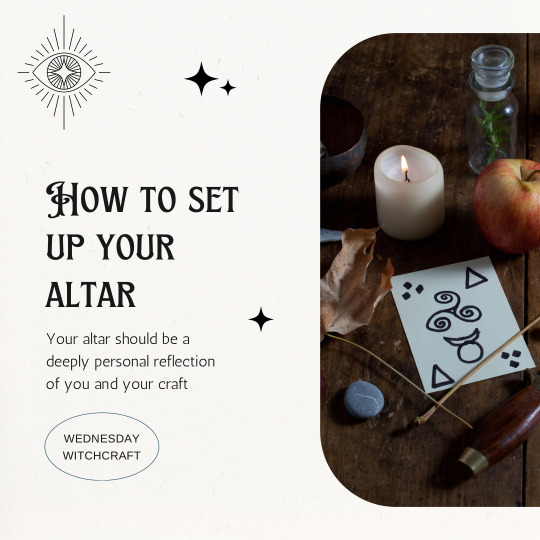
Setting up your altar is a personal manifestation of your soul and your personality in the way you practice your Magick. Each witch may have a unique set up that reflects who they are, what type of witchcraft they practice, and what is sentimental to them. As such, every altar may look a little different. There is no specific “correct way” to set up your altar. The right way to set up your altar is what feels right for you. Nevertheless, if you’re setting up your first altar and don’t know where to begin, here are a couple tips on how you can set yours up:
Where to set up your altar:
You can set up your altar anywhere! You can set it up in your home, in your garden, in your workspace (although the best place to set it up would be a more private space) but essentially an altar can exist anywhere you make the room for one. Typically the best place for an altar would be a bedroom, since its a space that most people are connected to spiritually and feel most at rest. My altar is set up in a corner of my walk in closet. It’s on the smaller side but its big enough for me to practice my craft. For those that need a much smaller space, you could set your altar up on a dresser, a nightstand, or even your windowsill. You could even get a portable altar that can be taken down and put up easily, which is good for those that live in smaller housing and those that like to travel.
Which direction should your altar face:
Again, this one is more of a personal decision. In Wiccan history, traditionally the altar is said to be facing North. However, you can face your altar in whatever direction feels right. Perhaps there is a beautiful view facing East that helps you meditate, or perhaps the area you want to set up your altar in only faces South. That is completely OK. As for me, I have my altar facing North-East, based on my preference on the elements I feel most connected to. I have two modes, I’m either completely grounded or completely in the clouds, so the elements I feel most connected to are earth and air; which is how I chose to position my altar. If you want to position your altar for the elements you feel most connected to, you would choose between North (earth), South (fire), East (air), and West (water). However you choose to position your altar should feel right to you.
What to put on your altar:
Your altar can consist of a few traditional things and personal things. You can have plants, crystals, candles, incense, and other traditional tools. You can also have personal items such as photographs, magazine clippings of something you want to manifest in your life, a homemade wreath or jewelry, or anything that feels personal to you such as a seashell or stone you picked yourself on your last hike or adventure. There’s a few things I personally believe every altar should have for spiritual protection purposes (this is my opinion only, not mandatory in any way) and those are:
an altar cloth
a candle
protective crystals (such as black tourmaline, smoky quartz, or amethyst)
incense or white sage
a fireproof bowl or cauldron
Additional things you may want to consider for your altar:
a wand (either premade or handmade) or athame
herbs or crystals for spells
a pendulum board or ouija board (if you wish to commune with spirits)
a chalice
something representing each of the elements
a compass
charms or small statues of things that you connect spiritually with
hand-picked items such as seashells, acorns, pine cones, leaves, feathers, or stones
Important things to remember about your altar:
I know I sound like a broken record saying this, but again, your altar should be personal. A reflection of YOU. If your altar feels right, then it’s right. If it feels like its missing something, add more to it. If it feels too cluttered or like too much, take stuff off. Your altar can change with you! You can switch things out as you feel your energy shift. Something that is very important to remember about your altar, is that it is a sacred place. Cleanse your altar if things start to not feel right after changing things up. Remember that things you find other places, may have picked up energy from that place/people, so be sure to cleanse any items you are bringing into your sacred space.
Blessed be
#witchcraft#witches#baby witch#divine feminine#divination#altar#spellwork#spellcasting#spells#spellcraft#witchy vibes#witch community#tarot witch#green witch#white witch#wicca#traditional wicca#ecletic witch#energy work
78 notes
·
View notes
Text

Hey witches! Are you drawn to the rhythm of the waves, the salty scent of the sea, and the boundless expanse of the ocean stretching to the horizon? If so, you might be attuned to the magic of Sea Magic, a mystical practice that connects with the elemental energies of water and the mysteries of the deep. Here are a few ways to embrace the magic of Sea Magic:
🌊 Connect with the Tide: Sea witches typically have a strong connection to the ocean, drawing inspiration, energy, and spiritual guidance from its vastness and power. Tune into the ebb and flow of the tides, allowing their rhythmic movement to guide your magical workings and rituals. Work with the energy of high tide for abundance and manifestation, and low tide for release and letting go.
🚰 Water Magic: Water is a central element in sea witchery, and practitioners often work with its properties for cleansing, healing, intuition, and emotional balance.
🌙 Moon Magic: Like many other forms of witchcraft, sea witchery often incorporates lunar cycles and phases, harnessing the energy of the moon for rituals and spellcasting.
🪸 Herbalism: Sea witches may work with herbs and plants associated with coastal regions or those that thrive in saline environments for magical purposes.
🐬 Work with Sea Creatures: Connect with the spirits of the sea and the creatures that dwell beneath the waves, such as dolphins, whales, and mermaids, honoring their wisdom and guidance in your magical practice.
🐚 Collect Seashells and Sea Treasures: Sea witches may collect shells, driftwood, seaweed, and other items washed ashore for use in spells, rituals, or as talismans. Gather seashells, sea glass, and other treasures washed ashore by the ocean, incorporating them into your spells, rituals, and altar decorations to infuse your magic with the energy of the sea.
🌊 Invoke Ocean Deities: Cultivate a relationship with ocean deities and spirits, such as Poseidon, Yemaya, or Neptune, by offering prayers, making offerings, and invoking their blessings and protection in your magical workings.
🧜🏼♀️ Seafaring Lore and Folk Traditions: Sea witches may draw upon maritime folklore, legends, and traditions for rituals, spells, and divination practices. Marine creatures like dolphins, whales, mermaids, and sea turtles may hold symbolic significance in sea witchcraft, representing various aspects of the ocean's energy and mythology.
🌬️ Navigation and Divination: Some sea witches incorporate navigation techniques, such as reading the stars or using instruments like compasses, into their practice. Divination methods related to the sea, such as scrying with water or shells, may also be used.
🦭 Respect for Nature: Central to sea witchery is a reverence for the natural world, particularly the ocean and its ecosystems, with an emphasis on environmental stewardship and sustainability. Sea witches often perform rituals for protection, purification, healing, and empowerment, drawing upon the strength and resilience of the ocean.
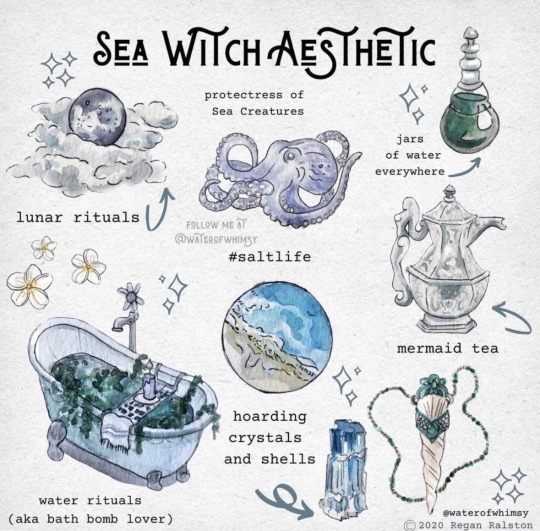
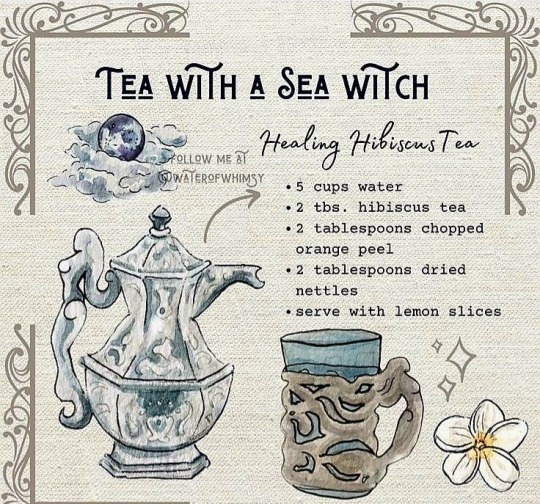
Whether you're a beachcomber, a sailor, or simply a lover of the sea, Sea Magic invites you to dive deep into the mysteries of the ocean and explore the hidden realms that lie beneath the waves. So let the rhythm of the sea guide you, and may your magic flow as freely as the currents of the ocean! 🌊🐚
Books to Read:
Water Magic by Lilith Dorsey
The Sea Witch: A Grimoire of Ocean Magick by Jennifer Heather
Year of the Witch: Connecting with Nature's Seasons through Intuitive Magick by Temperance Alden
#queue the magick#witchcraft#witch#witchblr#reference#magickkate#kitchen witch#sigils#green witch#witchy#weather witch#modern witchcraft#sea witch#cosmic witch#witches#baby witch#witch aesthetic#baby witch tips#witchcore#witchy vibes#beginner witch#college witch#college witch tips#cottage witch#witch community#witch tips#witchcraft 101#witchcraft community
49 notes
·
View notes
Text


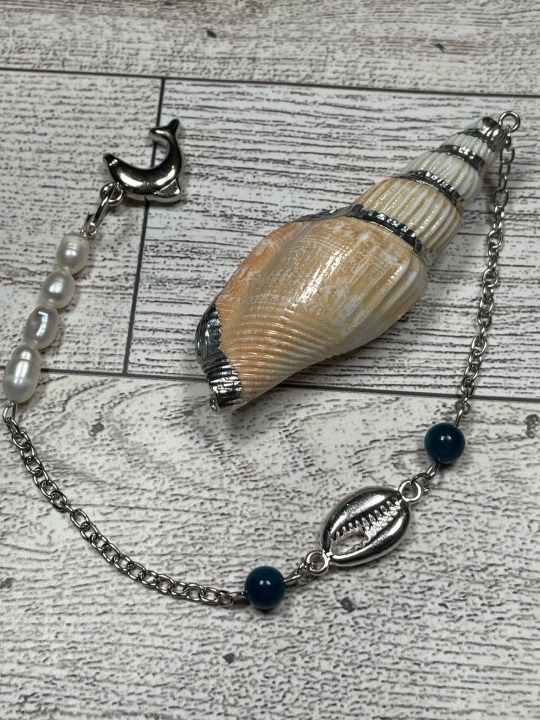
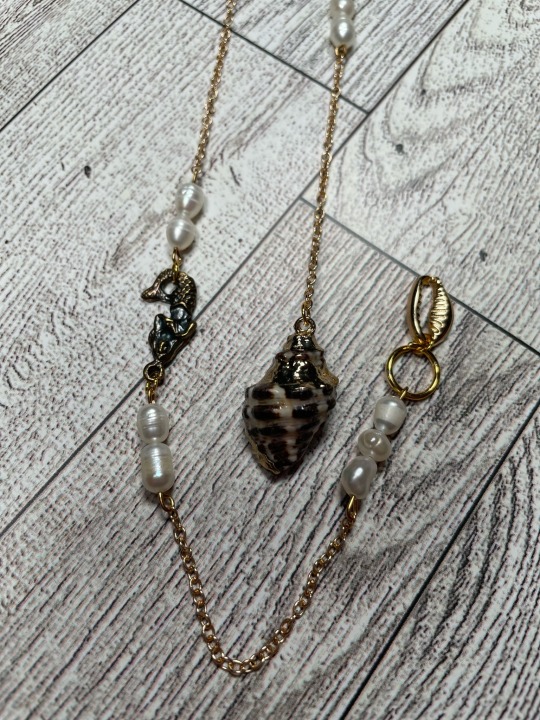



I made four new pendulum designs so if one didn’t call out to you before, maybe one does now. I hope you love them like I love them.
Etsy: FreyjasFineries
#sea witch aesthetic#sea witch#sea witchcraft#sea witchery#water magic#ocean witchcraft#ocean witch#sea core#pendulum readings#seashell pendulum#deluxe pendulum#pendulum divination#pendulum magick#water witchcraft#water witch#sea goddess#sea god#witchblr#witchcraft#witchythings#paganism#witchcore#divination tools#divination community#sea shells#ocean core#witch community#mermaid magic#pagan community#pendulum
29 notes
·
View notes
Text

June is upon us, bringing the warmth of the sun and the lushness of summer! As the days grow longer, there’s a magical energy in the air that’s perfect for our witchy practices. Here are some enchanting things to do this month, including a few you might not have thought of! 🌞🔮
1. Celebrate Litha (Summer Solstice): On June 21st, the Summer Solstice is the longest day of the year. It’s a powerful time for manifestation and gratitude. Decorate your altar with sun symbols, fresh flowers, and candles. Consider a sunrise or sunset ritual to honor the sun’s peak.
2. Herb Harvesting: Many herbs are at their peak potency in June. Gather rosemary, thyme, lavender, and sage. Dry them for use in spells, teas, and incense. Remember to thank the plants and leave offerings in return for their bounty.
3. Midsummer Night’s Dream: Inspired by Shakespeare, embrace the fae energy that’s strong during this time. Create a faery garden or leave offerings of milk, honey, and shiny trinkets in your garden to invite the fae into your life. ***Be cautious and be aware of who you are working with. Make sure you study before you call forth anything***
4. Solar Water: Create solar water by leaving a jar of water in the sunlight for several hours. This water can be used for cleansing, charging crystals, or in sun spells to bring energy and vitality into your life.
5. Nature Walks: Take long walks in nature to ground yourself and connect with the Earth. Collect natural items like feathers, stones, and leaves for your altar. Pay attention to animal sightings, as they might bring messages from the spirit world.
6. Fruit Magick: June brings a bounty of fruits like strawberries, cherries, and apricots. Use them in kitchen witchery—bake a pie with intention, make a fruit salad charged with positive energy, or create fruit offerings for deities or spirits.
7. Seashell Spells: If you live near the coast or have access to seashells, use them in your magick. Seashells represent water and can be used in love spells, for emotional healing, or to enhance intuition.
8. Firefly Meditations: If you’re lucky enough to have fireflies in your area, watch them in the evening. Use their gentle light to guide your meditation, symbolizing illumination, hope, and the beauty of small things.
9. Sun Gazing: In the early morning or late evening when the sun is not too strong, practice sun gazing. This can be a form of meditation and can help you absorb the sun’s energy directly.
10. Journaling with Intention: Reflect on the first half of the year and set intentions for the months ahead. June is a midpoint, a perfect time to reassess and realign your goals and dreams.
11. DIY Sun Catchers: Craft sun catchers with crystals, beads, and other shiny objects. Hang them in your windows to catch the sunlight and fill your space with rainbows and positive energy.
12. Create a Summer Spell Jar: Fill a jar with items that represent summer to you—sunflowers, sand, seashells, and herbs. Seal it with a yellow candle and use it to attract summer energy into your home.
13. Moonlit Bath: On a warm night, take a moonlit bath with flowers, essential oils, and sea salt. This can cleanse your aura and connect you with the moon’s feminine energy.
14. Dance Under the Stars: Gather friends or enjoy a solo dance session under the starry sky. Let the rhythm connect you with the universe and raise your vibrations.
15. Make Sun Tea: Place tea bags in a jar of water and let it steep in the sunlight. As it brews, infuse it with your intentions and drink it to absorb the sun’s energy.
Let’s embrace the magic of June and make the most of these sunny, enchanted days! What are your favorite witchy things to do in June? Share in the comments! 🌞🌸🔮
Stay strong, stay well, stay safe. 💕
7 notes
·
View notes
Text
Ritual
This final post will address Ritual purpose, required tools, etiquette, and progression.
If there has been anything in this series of posts that I didn’t touch on, or that needs expanding, please don’t hesitate to comment/DM. Thanks for reading along.
🕯🌒🌕🌘🕯
The reasons for performing a Ritual usually fall under three categories:
to perform Magick or spellwork
to honor and connect with the Divine
to enact spiritual beliefs in a physical and visual way
But if we think about it, most Rituals accomplish all three purposes. In Sabbat rites, the stage of the God’s life is presented, participants are confronted with Divine presence, and energy is raised and put forth to turn the Wheel of the Year. Moon Rituals are then a time to honor the Goddess specifically and gain Her wisdom; express our belief in Her power, existence, and influence on our lives and the world; and we may also perform other sorts of Magick, such as healing, or for another cause.
This is a verse from a song titled, “Circles,” that I feel sums up Ritual purpose very succinctly:
Circles for healing and working the weather
Circles for knowing the Moon and the Sun
Circles for thanking the Lord and the Lady
Circles for dancing the dance never done
Here are tools that are absolutely needed for a Ritual:
🕯🌒🌕🌘🕯
Ritual vs. Rite vs. Spell
My personal guideline is that a Ritual celebrates something and is usually repeated, like a holiday or a Moon phase. A spell is often a one-time or as-needed thing, and may be part of a ritual or done seperately. For example, I could charge a healing amulet in a Ritual, or just ground and center and hold the object in my hands while sitting on the couch. By contrast, doing a Midsummer Rite, while done at the Solstice specifically, adds to and builds upon the rest of the year and every Midsummer before it.
I see spells as having a very specified and narrow focus, as in, "help me get a good job" or, "heal this ailment." Rituals, while they still have focus and intent, are broader. Spells are also time-sensitive. They're finite. They can be part of a Ritual, but they aren't always, and can be done completely separately.
To expand/confuse things further, I call the individual parts of a Ritual "rites." So you have the the Rite of Casting a Circle, the Beltane rite, etc.. And when those are patchworked together, they make a Ritual.
To use an analogy, spells are one-shots, Rituals are chapter fics, and rites are the individual chapters.
🕯🌒🌕🌘🕯
The altar itself, draped with a cloth if desired. Usually, it will be placed in the center of the Ritual space, facing North. It may have statues or other representations Deity on it, and may be decorated for the season and/or Ritual. It’s common to include a vase of flowers, regardless of any other decorations.
Candles, one each for the God and Goddess being honored plus four total for the Quarters, and a way to light them (I personally prefer matches, some use disposable lighters). Using heat-safe candle holders is an important safety measure. There may be representations of the Elements near the Quarter candles also, such as a stone for Earth, a feather for Air, an additional red candle for Fire, and a seashell for Water.
Incense appropriate to the Ritual being performed. It should be tended to throughout the ritual so it lasts for the duration.
Two small bowls, one filled with salt and another with water.
A wand. Usually the length of a forearm is sufficient, and the type of wood may vary.
Each participants’ athame. The Priest’s and Priestess’ athames are usually on the altar.
Each participants’ goblet. The Priestess’ goblet is usually placed on the altar itself and used to consecrate drink for the Cakes and Wine rite.
An altar pentacle, or at the very least a plate or platter to hold the food that will be blessed during the Ritual.
Food and drink to consecrate and share. Usually, a separate bowl or other vessel is also provided for libations during Cakes and Wine.
Any other tools/accessories are optional, depending on practice, preference, and necessities of the Ritual. Here is a basic diagram of a possible altar set-up:

🕯🌒🌕🌘🕯
These are general guidelines for polite and proper behavior in Ritual. Specific groups/Covens may have other requests of their participants.
Arrive to the Ritual location on time and freshly showered, with any garb, food, or other items you may need.
If you are unable to sit/stand/turn/etc. for several minutes at a time, or under your own power, please make this known prior to Ritual so that appropriate efforts to accommodate you can be made.
Once in Ritual space, only move or turn deosil (clockwise) unless directed otherwise. In some cases, asking permission to move widdershins (counter-clockwise) is acceptable and will be granted if deemed appropriate and necessary.
Please do not touch or pick up another’s tools (athame, goblet/chalice, etc.) without being given express permission of the owner.
Please do not pick up or touch items on the altar without asking or being instructed to do so. When doing so, use either the right hand, or, if necessary, both hands together.
If you hear the phrases, “Blessèd Be,” or, “So Mote It Be,” it’s a pretty safe bet you’re supposed to repeat it (except during Personal Consecrations, only the person being consecrated need repeat the phrase then).
The Priest/ess will usually direct participants as to what actions to take during Ritual. But as a general rule if more than three people are performing the same action together, you’re probably supposed to do it too.
Once the Circle is cast, please do not leave the Ritual space unannounced, except in an immediate emergency. In any other case, please ask the Priest/ess to open the Circle to allow you to pass the boundary.
Please only use participants' Ritual names once the Ritual has begun. If you haven't been explicitly told names already, or if you forget, it's perfectly permissible to ask.
Some groups perform Ritual very solemnly, with a formal air and devoted theatrics. Others take a more jovial and casual approach. You'll get the vibe pretty quickly once Ritual starts.
🕯🌒🌕🌘🕯
Most Rituals follow some kind of formula and structure. The following outline of a Ritual progression was created from a melding of my experiences, and various reading materials.
Prior to Ritual, all participants need to don their robes, and whatever other garb they wish to wear. If there are any special instructions for the Ritual, the Priest/ess will usually explalin them briefly at this time. Other preparation may include a guided meditation tailored to the Ritual’s purpose.
⭐
Self-Blessing.
Before entering the Ritual space, participants go through a small, self-blessing rite, anointing specific points on their bodies with consecrated salt-water. There is usually a space and script provided for this purpose. After this is done, everyone will gather at the Ritual site. Once there, everyone breathes deeply to ground, center, and align with each other. Group chanting may take place here as well to facilitate that alignment.
⭐
Circle Opening.
There are several steps to creating sacred space. During these acts, all present are to lend their energy to the physical actions of the Priest/ess.
1. Lighting Altar Candles. Deity candles are lit, sometimes with brief spoken dedications to the Gods being honored (i.e., “This candle burns for ______, Who represents XYZ”). Incense is also lit at this time.
2. Elemental Dedications. Beginning in the East and moving deosil (clockwise), each of the Quarter candles are lit, along with a brief dedication, usually a poetic description of the Direction and Element and what they mean/represent.
3. Circle Casting. Starting in the East, the Circle is drawn by walking deosil around the boundaries of the Ritual space, the energy directed by the wand. A chant of intent may be spoken at this time.
4. Elemental Blessing. The Elemental representatives of salt and water on the altar are mixed, blessed, and consecrated with a brief statement of intent. The incense may also be similarly blessed at this time.
5. Circle Consecration. The salt-water and incense are carried deosil around the Circle. The water is sprinkled and the incense smoke wafted along the boundary. A chant or invocation may be spoken at this time as well.
6. Personal Consecrations. Each participant has their name stated out loud, is then anointed with consecrated salt-water, and finally cleansed with incense smoke. Appropriate songs or chants may be sung at this time.
7. Deity Invocations. The Gods are formally invited to attend and preside over the rite. This is done here because the space has been prepared for and dedicated to Them by establishing and consecrating the boundaries and participants.
8. Calling the Quarters. Beginning again in the East and still moving deosil, the appropriate directional Element is invoked to watch over lend their energy to the rite. All present should salute the Quarters with their athames.
When all Opening steps are completed, it’s common to ring a bell to signal that this portion is complete.
⭐
Ritual Purpose.
This is the point in the Ritual where things get specific, and any necessary rites are performed. Sabbat rites often include an enaction of the stage of the God’s life at that Sabbat, a dance to raise energy for turning the Wheel of the Year, and can also involve a channeling or guided meditation. Esbat rites also often involve a channeling/meditation in addition to any other Magick or spells that may be performed.
⭐
Cakes and Wine.
Food and drink are ritually blessed and libated to the Gods. Then, all participants share in the food and drink together. This is also a time to discuss the rite that was just performed, and/or any other topic the Priest/ess may have chosen.
⭐
Circle Closing.
The Quarters are banished (beginning in the East and moving deosil), directed to return to their own realms, again accompanied by athame salutes. All candles are extinguished to dismiss the energies that resided there during the rite. The Gods are thanked, and the Deity candles on the altar are extinguished as well. A statement that the rite is ended is usually spoken.
🕯🌒🌕🌘🕯
The basic structure of the ritual is the same every time, but the Ritual Purpose portion can vary according to the purpose of the rite. Often, though, the same script will be read and the same actions performed year-to-year and month-to-month. This is done to create triggers for experience. Repetition of the same actions for the same purpose creates a subconscious memory of what happened last time, and so the mind and spirit then react in similar fashion to generate a new experience this time around. Additionally, the repetition builds the energy on itself; if similar energy is generated each time, the end result is stronger than if it were to change every time. Hence, the number of Ritual scripts needed can be as few as nine, one for each Sabbat, plus an Esbat.
Thank you for reading.
Blessèd Be!
10 notes
·
View notes